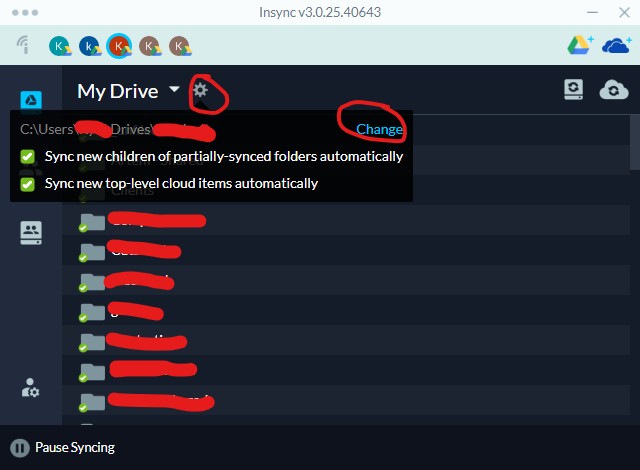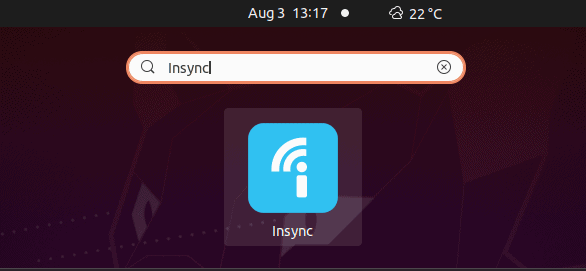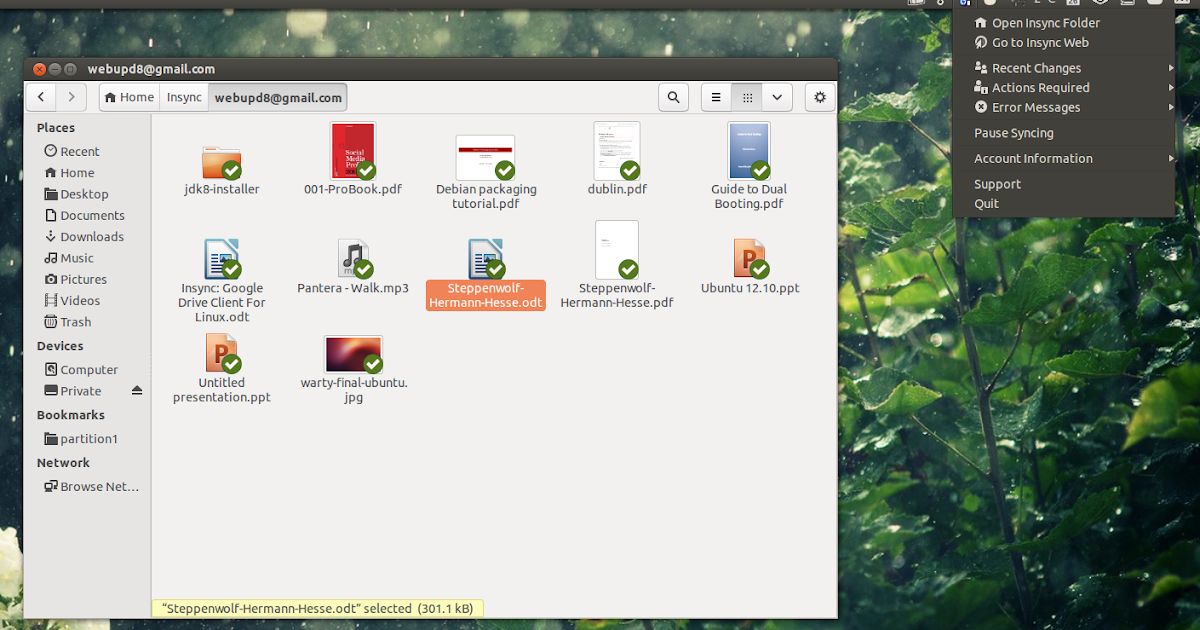
Obtain Device ID from Actions > Show ID Adding Syncthing Device ID Two devices will only connect and talk to each other if they are both configured with each other’s device ID. A device ID is a unique, cryptographically-secure identifier that is generated as part of the key generation the first time you start Syncthing. This is accomplished by exchanging “ device IDs“. Once setup is done, each device must be told about the other device. Syncing data between two devices with Syncthingįor you to be able to sync data between two or more computers with Syncthing, ensure Syncthing has been installed and configured on all systems. Also recommended to tick Use TLS for https connection only. If you missed to set username and password, go to Actions > Advanced to set User and Password.
Insync ubuntu 16.04 password#
Then set admin username and password on “ GUI” section.Īfter login you should see an interface like below: If the -gui-address="ip:port" option is not provided, the service will run on On accessing Syncthing GUI, you’re warned to set UI username and password.

The Syncthing admin GUI is started automatically by systemd and is available on. Jul 16 19:52:58 ubuntu syncthing: INFO: Detected 1 NAT service Accessing Syncthing UI on Ubuntu 22.04|20.04|18.04 Jul 16 19:52:43 ubuntu syncthing: INFO: quic://0.0.0.0:22000 detected NAT type: Not behind a NAT Please consider using a normal user account. Jul 16 19:52:43 ubuntu syncthing: WARNING: Syncthing should not run as a privileged or system user. Jul 16 19:52:43 ubuntu syncthing: INFO: My name is "ubuntu" Jul 16 19:52:43 ubuntu syncthing: INFO: Access the GUI via the following URL: Jul 16 19:52:43 ubuntu syncthing: INFO: GUI and API listening on :8384 Jul 16 19:52:43 ubuntu syncthing: INFO: Relay listener (dynamic+) starting Jul 16 19:52:43 ubuntu syncthing: INFO: TCP listener (:22000) starting Loaded: loaded (/etc/systemd/system/ disabled vendor preset: enabled)Īctive: active (running) since Thu 19:52:42 CEST 2min 28s agoĬGroup: /system.slice/system-syncthing.slice/


You can explicitly specify user name: MYUSER="" Then start syncthing service: sudo systemctl start $USER
Insync ubuntu 16.04 update#
You can as well replace 192.168.1.20 with your system IP address then update Systemd service list: sudo systemctl daemon-reload Since Ubuntu 18.04+ comes with systemd, we can create systemd unit files to manage syncthing service. Service files for systemd are provided by Syncthing and can be found in etc/linux-systemd sudo vim /etc/systemd/system/ ĭescription=Syncthing - Open Source Continuous File Synchronization for %IĮxecStart=/usr/bin/syncthing -no-browser -gui-address="0.0.0.0:8384" -no-restart -logflags=0 Now that we have syncthing installed, let’s proceed to the configuration section. Once installed, check version: $ syncthing -version

Insync ubuntu 16.04 install#
Then update system and install syncthing package: sudo apt update When GPG Key has been added, create repo content: echo "deb syncthing release" | sudo tee /etc/apt//syncthing.list


 0 kommentar(er)
0 kommentar(er)
